
Morden is a district and town in south London, England, within the London Borough of Merton, in the ceremonial county of Greater London. It adjoins Merton Park and Wimbledon to the north, Mitcham to the east, Sutton to the south and Worcester Park to the west, and is around 8 miles (13 km) south-southwest of Charing Cross. Prior to the creation of Greater London in 1965, for local government purposes, Morden was in the administrative and historic county of Surrey.

Milton Abbas is a village and civil parish in Dorset, England, lying around 5 miles southwest of Blandford Forum. In the 2011 Census the civil parish had a population of 755.
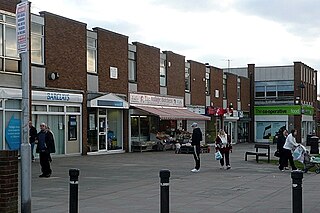
Tilehurst is a suburb of the town of Reading in the county of Berkshire, England. It lies to the west of the centre of Reading; it extends from the River Thames in the north to the A4 road in the south.

Fonthill Gifford is a village and civil parish in Wiltshire, England, to the north of the Nadder valley, 14 miles (23 km) west of Salisbury.
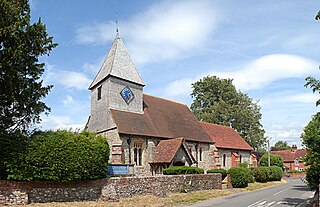
East Clandon is a village and civil parish in Surrey, England on the A246 between the towns of Guildford to the west and Leatherhead to the east. Neighbouring villages include West Clandon and West Horsley.
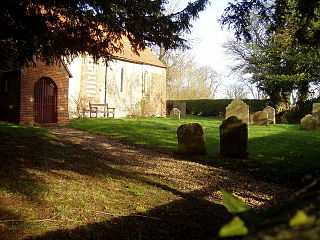
Ashmansworth is a village and civil parish in the Basingstoke and Deane district of the English county of Hampshire.

Micheldever is a village and civil parish in Hampshire, England, situated 6 miles (10 km) north of Winchester. It lies upon the River Dever.

Nuneham Courtenay is a village and civil parish about 5 miles (8 km) SSE of Oxford. It occupies several miles close to the east bank of the River Thames.

King's Somborne is a village in Hampshire, England. The village lies on the edge of the valley of the River Test.

Bassett is a suburb and electoral ward of the City of Southampton, England. The suburb lies to the north of the city centre and is largely residential, including the University of Southampton's Glen Eyre Halls of residence complex, which houses around 2,100 students. Bassett gives its name to part of the A33 arterial road which links the city centre to the M3, described by Pevsner & Lloyd as "part of the splendid tree-lined route into Southampton from Winchester, London and the north". The highest point in the City of Southampton lies on Bassett Avenue at a height of 82 metres (269 ft) above sea level.

Thorpe is a village in northwest Surrey, England, around 20 miles (32 km) west of central London. It is in the Borough of Runnymede, between Egham, Virginia Water and Chertsey. It is adjacent to the M25, near the M3 — its ward covers 856 hectares (3.3 sq mi). Its traditional area with natural boundaries covers one square mile less. Thorpe is a former civil parish.

South Warnborough is a small village and civil parish in the English county of Hampshire. In the 2001 census, the population was 407. In the 2016 census, the population was estimated to be 509.

Stratton Park, in East Stratton, Hampshire, was an English country house, built on the site of a grange of Hyde Abbey after the dissolution of the monasteries; it was purchased with the manor of Micheldever in 1546 by Thomas Wriothesley, 1st Earl of Southampton. The last earl of Southampton made Stratton Park one of his chief seats, and his son-in-law, Sir William Russell, pulled down part of the hamlet and added it to his deer park in the 1660s. The Russell heirs eventually sold the estate in 1801 to Sir Francis Baring, Bt, of the Baring banking family. Baring remodeled the manor house in a neoclassical style, to designs by George Dance the Younger, 1803–06,' including an imposing stone Doric-columned portico and stuccoed brick main block and wings. The pleasure grounds and landscape park were laid out and planted, starting ca 1803 by Humphry Repton, and described by William Cobbett, in Rural Rides: in the counties of Surrey, Kent, Sussex, Hants, when Stratton Park held the living of Micheldever and included Micheldever Wood, which Cobbett said "contains a thousand acres [4 km2], and which is one of the finest oak-woods in England." In the late nineteenth century Thomas Baring, 1st Earl of Northbrook laid out more formally structured gardens, with hardy plantings by Gertrude Jekyll. The park has been Grade II registered since 1984.

Bramdean is a village and former civil parish, now in the parish of Bramdean and Hinton Ampner, in the Winchester district, in the county of Hampshire, England. It is a linear settlement located along the busy A272 trunk road which was widened by the American troops in 1943 in preparation for D-Day.
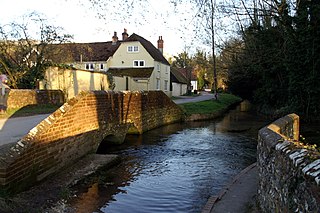
Warnford is a village and civil parish in the City of Winchester district of Hampshire, England. The parish covers 1283 hectares. The village lies on the A32 in the upper valley of the River Meon between West Meon and Exton. The population in 2019 was estimated at 220. The village is rural in character, with most of the buildings along River Lane, Lippen Lane and Hayden Lane.

Seale is a village in Surrey, England. Seale covers most of the civil parish of Seale and Sands and the steep slope and foot of the south side of the Hog's Back as well as a large hill which exceeds it – as such is part of the Surrey Hills Area of Outstanding Natural Beauty.

North Stoneham is a settlement between Eastleigh and Southampton in south Hampshire, England. Formerly an ancient estate, manor, and civil parish, it is currently part of the Borough of Eastleigh. Until the nineteenth century, it was a rural community comprising a number of scattered hamlets, including Middle Stoneham, North End, and Bassett Green, and characterised by large areas of woodland.

Great Tew is an English village and civil parish in Oxfordshire, about 5 miles (8 km) north-east of Chipping Norton and 8 miles (13 km) south-west of Banbury. The 2011 Census gave a parish population of 156. This qualifies it for an annual parish meeting, not a monthly parish council. The village has largely belonged since the 1980s to the Johnston family, as the Great Tew Estate, with renovations and improvements.
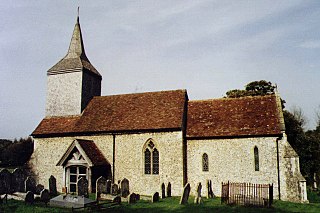
Stoke Charity is a small village and former civil parish, now in the parish of Wonston, in the City of Winchester district of Hampshire, England. It is on the River Dever, its nearest town is Winchester, which lies approximately 6.1 miles (9.9 km) south-west from the village. In 1931 the parish had a population of 111.
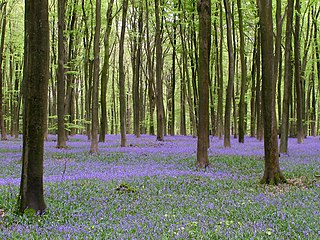
Micheldever Wood is a wood near the village of Micheldever, in Hampshire, England, about 5 miles (8 km) north-east of Winchester. It is managed by Forestry England. There are prehistoric remains from the Bronze Age and other periods in the wood, including a Roman villa.






















